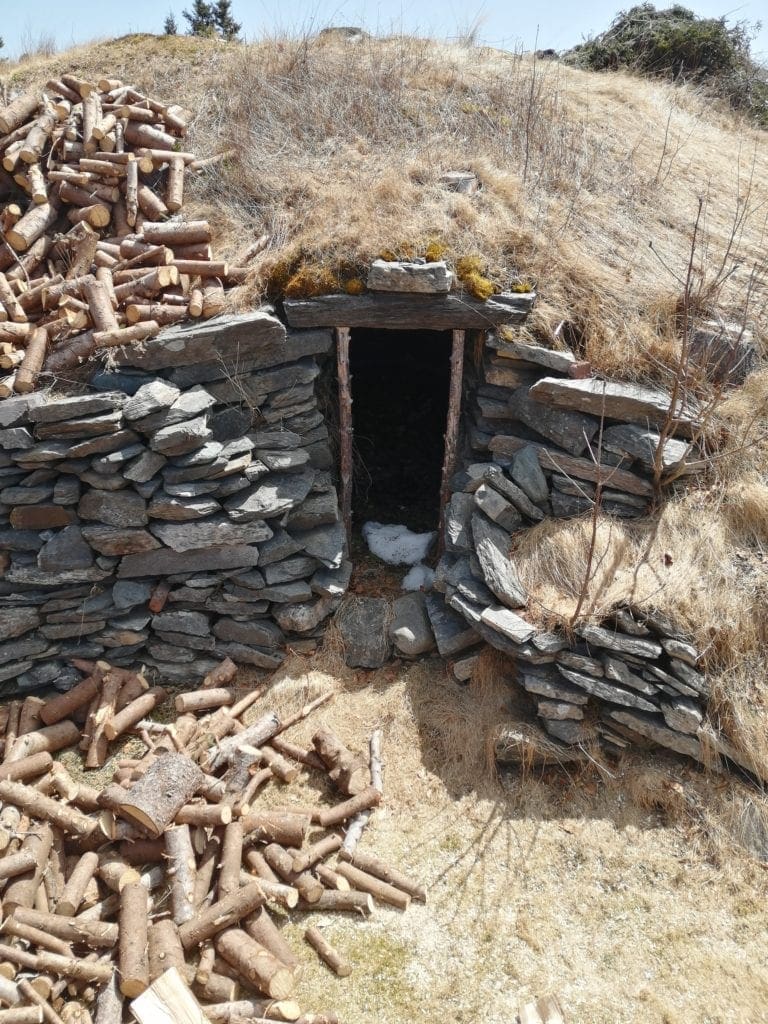The Root Cellar in Mobile Bay is over 200 years old, and so is the house next to it. The current resident, retired local priest Father Kennedy, was born in this house and can tell you more about the local history than anyone else.

Now in his 70’s, father Kennedy loves where he is and can’t think of a better place to be.
Kennedy still grows vegetables, raises chickens, ducks, and geese has dogs, and is always up to something. Today we ran into him on the beach with his wheelbarrow collecting coastal kelp.
“I consider myself to be more of a horticulturalist than a farmer,” says Kennedy as we chat on the beach in the mild coastal breeze. “This is the largest harvest of kelp is have ever seen in all my years living here,” says Father Kennedy as he points to the mountains of kelp and seaweed that have piled onto the beach from this spring’s storms. “It’s wonderful for the gardens. People use to traditionally build-up their gardens by mixing kelp with seaweed.” That’s why we’re at the beach today too. We’re also collecting seaweed for our organic garden, and it’s true, this year’s kelp harvest is legendary.

Self-sufficiency is more popular now than it has been in a long time. With our modern culture, global trade, urbanization, and a general disassociation from our food sources, more people now than ever are rediscovering traditional skills like farming, homesteading, and in general, how to be more self-sufficient.
With spring in the air, home gardening has seen a massive increase, and garden centers are booming. Compost sales are through the roof, greenhouse plastic is sold out everywhere, and 2020 is clearly becoming the year of the gardener even before the buds on the trees have officially opened.
Growing food is one thing, but keeping it fresh throughout the winter is a whole other skill, especially when you take electricity out the equation and start to ponder how one would keep potatoes, cabbage, carrots, and turnip fresh all winter long after the snow has fallen and the ground has frozen.
Even now, you can’t just keep these things in the refrigerator all winter and expect them to last. You need a special room with just the right humidity and temperature to ensure your harvest will not freeze or spoil, and nothing works quite as well as a root cellar.

If you’ve ever done some gardening in the spring and had the joy of turning over an old potato patch from the previous fall, you will notice that along the way you’ll come across a potato or two that were forgotten or missed and left in the ground over the winter. Usually, this potato is in perfect condition and can be eaten that night for supper. Contrast that with the potatoes you bought just a month ago at the store that are now sprouting and more ready for planting than eating.
The reason is that the potato that was buried underground was spared from the frost and humidity, keeping it perfectly preserved. A root cellar does the same thing. It’s essentially a big underground room (or multiple rooms) that can be used to store food all winter long. Here is an image of the 200-year-old Newfoundland Root Cellar at Mobile Bay, Newfoundland in the Witless Bay Marine Ecological Reserve.

Newfoundland is well known for utilizing root cellars. Back in the day, everyone had one. Not having a root cellar back then would be the equivalent of not having a refrigerator now.
Elliston Newfoundland, in particular, is well known for root cellars and is referred to as the root cellar capital of Newfoundland because of their recent push towards a root cellar renaissance. If you’re a hardcore root cellar enthusiast and want to see some of the more elaborate root cellars on the island, a visit to Elliston Newfoundland should not be missed.
A little known fact, however, is Twillingate Newfoundland us the unofficial root cellar capital, having more root cellars per capita than anywhere else in the world.




